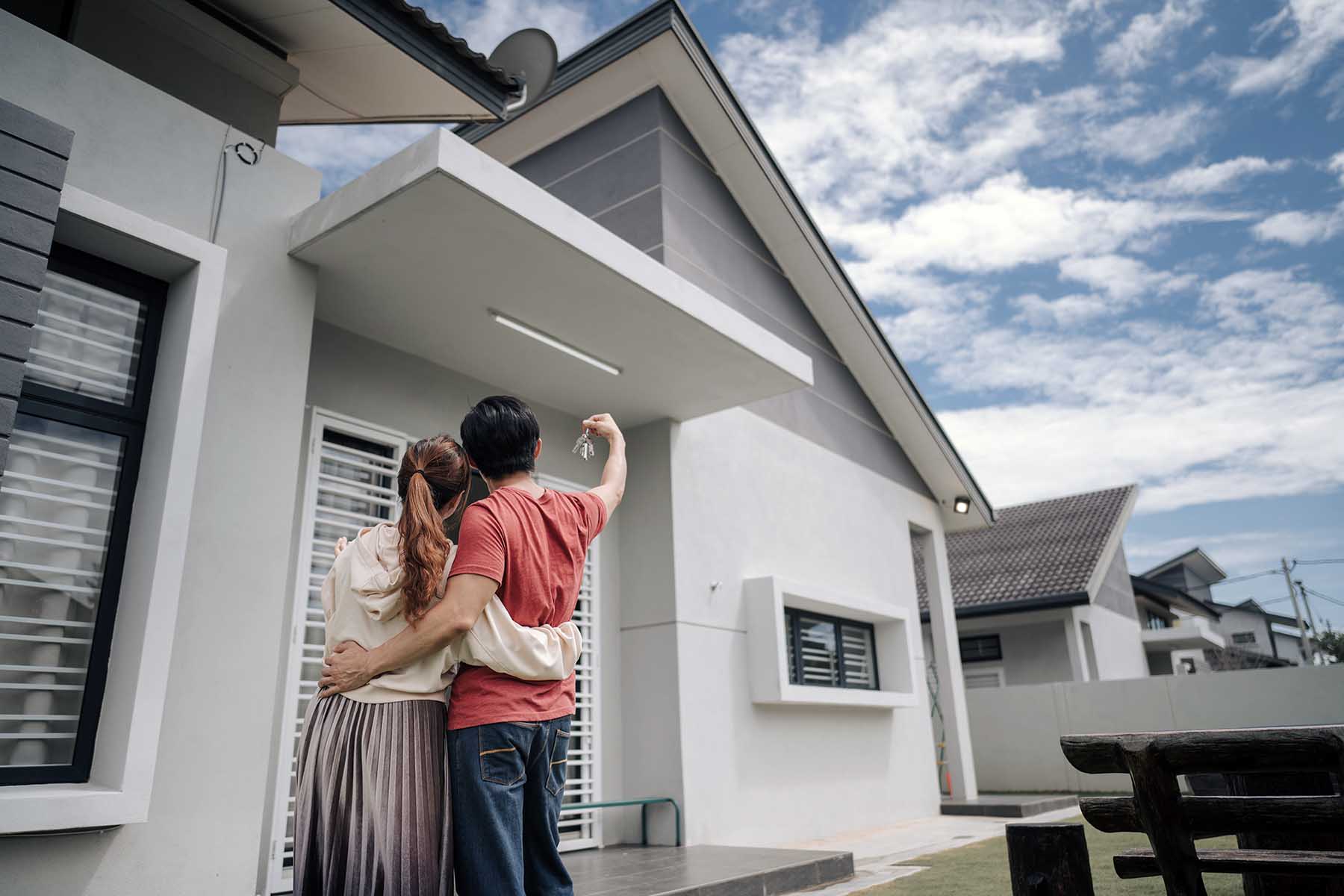It may be small in size, but Singapore sure packs a punch. The city-state is one of the most sought-after spots for expats from across the world to live and work.
Cosmopolitan, multicultural, and with great living standards, Singapore offers something for pretty much everyone: the career-driven, the entrepreneur, the foodie, the traveler, or the type that simply wants to sample life in one of Asia’s most dynamic, modern metropolises.
With accommodation options to suit most budgets and lifestyles, a fantastic transport network, and expat-friendly real estate agents, finding your perfect home in Singapore seems relatively easy. (Though, whether you can afford it is another thing.)
Take advantage of this insightful local perspective on where to live in Singapore by exploring the following topics:
Sirelo
It’s no secret that moving abroad can be stressful. Sirelo’s team of removal advisers is here to help. They provide five free quotes from international shipping companies so you can find the best options at the best prices. Take the stress out of your relocation to Singapore with Sirelo.
An overview of where to live in Singapore
According to the World Bank, Singapore is among the world’s most competitive economies and a leading financial hub with its entrepreneurial-friendly business culture.

This Southeast Asian island nation also ranks highly on most indices for its quality of living based on factors such as:
- Cultural diversity
- Education
- Economy
- Healthcare
- Infrastructure
- Safety
For example, the 2023 Mercer Quality of Life Survey places Singapore in 29th place out of 241 global cities. However, housing and its cost of living can be expensive.
Singapore is a diverse and multicultural society with many ethnicities, religions, and languages, making it easier for newcomers to assimilate, settle into a community, and build a support network.
In addition, the country’s commitment to balancing economic growth with environmental health is clearly shown through the dedicated efforts of the National Environment Agency (NEA). It strives to enhance Singapore’s livability for its residents through rigorous waste management regulations, vigilant monitoring of air and water quality, and the advancement of conservation and sustainability practices.
Which are the best districts to live in Singapore?
River Valley and The Quays
Expats love this district for its social lifestyle and convenience.
The Quays might lie almost in the shadows of the central business district’s towering office blocks, but life here is more about playing hard than working hard. This makes it especially popular with young (child-free) couples and singles. Residents in this neighborhood live in the country’s most exclusive condominiums and frequent some of its most lively bars, restaurants, and clubs.
Of course, a vibrant social lifestyle and convenience come at a cost. Expect monthly condo rents to start at S$3,000 for a small furnished studio, rising to five figures.

The district runs roughly parallel to a fairly short section of the Singapore River, the island’s main waterway. Since the late 1990s, this stretch has been cleaned up, glammed up, and transformed into one of Singapore’s most liveable areas.
From Robertson Quay, the river passes through an attractive park to the Zion Road vehicle bridge, with Great World City as a major landmark. This is a useful pitstop, with the well-stocked Cold Storage supermarket in the basement offering imported groceries (including very expensive cheese and wines). There’s also a Meidi-Ya Japanese supermarket, a cinema, restaurants, and many other interesting shops.
People flock from across Singapore to eat at Zion Road hawker center opposite Great World City. If you move into the area, check out the famous Char Kway Teow stall, but be prepared for the lines.
A two-minute walk from here is River Valley Road, lined with condos and useful amenities, including nurseries, a handy supermarket at Valley Point, and doctors’ and dentists’ clinics.
As elsewhere in Singapore, this district also offers plenty of green leisure spaces. There’s a landscaped path along the river with exercise and rest areas and weather shelters.
It’s perfect for cycling, jogging, or a spot of dawn tai chi, but it’s not just humans that enjoy the surroundings. Don’t be surprised to share your space with one of the giant monitor lizards living in the river. Don’t worry, they look scarier than they are.

Local expert
Gayatri Bhaumik
Insider tip
Close to Robertson Quay, a charming family of wild otters add fun and color to daily city life. But do not try to pet them; they look cute but can be vicious little critters.
Holland Village
Holland Village was the original expat hangout before the Quays and River Valley became fashionable.
Located a few kilometers northwest of downtown Singapore, the ‘village’ – which, if you’re wondering, has nothing to do with the Netherlands – still has a slightly retro vibe.
Life revolves around the family-oriented condos along Holland and Ulu Pandan Roads. Lor Mambong is a pedestrian street lined with cafes, restaurants, bars, hair salons, boutiques, massage parlors, and yoga studios.

Local expert
Gayatri Bhaumik
Insider tip
Treat yourself by popping into one of the popular neighborhood bakeries, cafes, and restaurants on Jalan Merah Saga, specifically Tiong Bahru Bakery, Baker & Cook. You won’t regret it!
Newcomers like Holland Village for its international feel, even by Singapore’s cosmopolitan standards. This means diverse culinary adventures and an expat-geared Cold Storage supermarket. There’s even an old-school newsagent just outside the MRT station that sells international magazines and newspapers.
More affordable than River Valley and the Quays, Holland Village is nonetheless an expensive place to live. Think upwards of S$6,000 monthly for a three-bedroom condo with all the facilities.
East Coast
East Coast refers to a string of suburbs that run roughly from east of downtown Singapore toward Changi Airport. It is parallel to the East Coast Park and East Coast Parkway (ECP), which is the main highway running out to the airport.
Its quick airport access makes this area especially popular with frequent travelers. The green MRT line also runs along this corridor out to the airport.
East Coast districts include Kallang, Geylang, and Bedok, each with its own subtle personality.
If being near water is your thing, Kallang’s a good choice. There are a number of high-end condos built around the inlets of Kallang Basin, where people sail dragon boats, kayak, and generally enjoy aquatic leisure activities. There are also many safe cycleways around the basin, with plenty of pitstops, especially around the Indoor Stadium.

All in all, this is a pleasant, airy neighborhood close enough to the city’s heart without feeling claustrophobic. Again, it’s not the cheapest part of the island. Expect to spend upwards of S$6,000 monthly for a two-bed condo with all the facilities.
East of here are the areas of Geylang, Bugis, and Bedok. Geylang once had a bit of a ‘reputation’ for its ‘alternative’ nightlife, but it’s much more sedate now.
These areas also offer the option to live in converted shophouses, which are colorful terraced houses oozing character, although they don’t come cheap. Think S$7,000 per month, usually without a garden.
West Coast
Expat families like this area because of its concentration of international schools, particularly around Dover Road.
Because it’s that little bit further out of the city center, rents are a little lighter on the wallet.
Life revolves around condos, most of which have Singapore-staple facilities such as swimming pools, gyms, tennis courts, and more. You will also have access to well-stocked supermarkets, cafes, and restaurants. Furthermore, close by on Alexandra Road, you will find an IKEA (one of two in Singapore).
The island playground of Sentosa is a short hop, skip, and jump away.
Orchard
The names Nassim, Grange, Scotts, Orchard, Emerald Hill, Tanglin, and Dempsey are synonymous with luxury living in the heart of Singapore.
This is where the city’s movers and shakers live in swanky condos and glitzy villas, all just a stone’s throw from Singapore’s most famous shopping street, Orchard Road.
To see how the other half live, take a stroll from Tanglin Road down Ridley Park and on to Dempsey Hill. The beautiful old ‘black and white’ villas in this area speak of a different era in Singapore’s history.
These colonial piles are popular with those residents with five-figure monthly budgets.
Bukit Timah Road
From Little India up to the island’s central catchment area lies another ‘expat belt,’ with international schools and expat-oriented social clubs like the:
- Hollandse Club
- Swiss Club
- British Club

Local writer and expert
Mark Lazell
Insider tip
This area is also the ‘lungs’ of the island. Bukit Timah Nature Reserve is great for a sweaty jaunt to Bukit Timah Hill, Singapore’s highest point. Many people also enjoy hiking and exploring the natural beauty of the lakes and forests in the Central Water Catchment.
Changi Village
For a much quieter choice of living, consider Changi Village.
About as far as you can get from the city center on the island, it is a sleepy antidote to downtown’s hustle, bustle, and magnitude of services and amenities.
However, it has a unique charm, is close to the airport, and is relatively affordable. Still, the downside includes being some distance from the central business district without an MRT station nearby, so you’ll be reliant on your own wheels, Uber, or the bus.
The Heartlands
Many citizens would agree that districts like Woodlands, Toa Payoh, and Ang Mo Kio are the ‘real’ Singapore and attractive to some expats for exactly this reason.

The Heartlands is the collective term for these areas of Singapore dominated by high-rise public housing (known as HDBs governed by the Housing & Development Board). What HDBs lack in condo luxuries (e.g., pools and gyms), they more than compensate in local flavor and affordability. Of course, there re some condos in the Heartlands as well.

Local writer and expert
Mark Lazell
Insider tip
Indeed, hanging out on an HDB void deck (i.e., communal space on the ground floor) with a beer or cup of teh tarik is a quintessential Singaporean experience.
Of course, the Heartlands are meticulously planned and organized around MRT stations, public transport hubs, and retail areas.
Best areas to live in Singapore based on your needs
Where are the family-friendly areas to live in Singapore?
Holland Village, Bukit Timah Road, and West Coast are particularly popular with families as it offers a quiet suburban lifestyle, green spaces, and several international schools.
Some popular educational facilities in the area include:
- Anglo-Chinese School International (ACS International)
- Hollandse School (Dutch School)
- International Community School (ICS)
- Tanglin Trust School
- The Japanese School Singapore (West Coast Campus)
- The Swiss School in Singapore
Holland Village caters to various housing budgets and offers a mixture of residential properties, including condominiums (most common), apartments, and houses with gardens.

Local expert
Gayatri Bhaumik
Insider tip
HDBs are still the most common type of accommodation in Holland Village.
Bukit Timah Road can be expensive, with apartments, condos, and houses (e.g., bungalows, semi-detached, and terrace properties) on offer. However, housing tends to be spacious, and residents often seek this area out for its proximity to nature reserves.

West Coast is a residential area comprising private and public housing (i.e., HDBs). Private accommodation options are typically condominiums with all the modern conveniences and extras like gyms, swimming pools, and playgrounds.
All these areas have good public transport links connecting them to Changi Airport and Singapore’s central business district for an easy work commute.
From Holland Village, you can take the Circle Line MRT to Raffles Place and Marina Bay. If you need to get to the airport, you can transfer to the East West Line at Buona Vista MRT Station, which is only a few stops away.
You can reach downtown Singapore via the many bus services operating in the Bukit Timah Road neighborhood. Alternatively, you can jump on the MRT line at one of the nearby stations (i.e., Newton or Botanic Gardens), which will also get you to the airport.
As West Coast is close to the business district, you can reach it quickly by bus and MRT services, specifically the Circle and East West Lines (also for the airport.)
All these neighborhoods offer a wide variety of grocery and retail shopping from supermarkets (e.g., Cold Storage and NTUC FairPrice) to local markets brimming with seasonal and fresh produce. You’ll also have access to shopping malls, fashion outlets and boutiques, and homeware, furniture, and electronics stores.
If you’re retired, where’s best to live in Singapore?
Singapore is a less popular retirement destination than nearby Malaysia or Thailand, with fewer large senior living communities or villages than in many other countries.
Still, retirees may find several social housing (some with assisted living and nursing services) as well as senior activity centers across the city-state, especially in the quieter neighborhoods, such as:
- Bukit Timah Road
- East Coast
- Holland Village
- River Valley

As older adults may need to access more extensive healthcare and nursing services, it is good to know that there are also several reputable hospitals in these areas, including:
- Gleneagles Hospital
- National University Hospital (NUH)
- Mount Elizabeth Hospital
- Singapore General Hospital (SGH)
- Tan Tock Seng Hospital (TTSH)
- Parkway East Hospital
- Raffles Hospital
Senior residents can also stay active and enjoy the many recreational facilities and golf courses in the areas, such as:
- National Service Resort and Country Club (NSRCC) Sea Sports Centre
- Sentosa Golf Club
- Singapore Island Country Club (SICC)
- The Tanglin Club
Where do singles prefer to live in Singapore?
River Valley, Robertson, and Clarke Quays are popular with single expats.
That’s not only for the vibrant nightlife but also because of the wider availability of furnished ‘plug and play’ studio apartments. These accommodation facilities come with innovative technology, modern appliances, and utilities, including movable walls and flexible furniture. As such, you can easily transform your space for optimal day or nighttime use.
Moving in and out is as easy as packing your bag and walking out the door.
Where in Singapore can you live comfortably on a budget?
Even though Singapore has some of the world’s most expensive real estate prices, if you’re willing to be flexible and you can get a mortgage, you’ll find something in your budget, especially in the Heartlands.
With excellent transport links across the island, your commute to Raffles Place downtown will still be no more than 20 minutes, making these areas a cost-effective choice.
Where are the most job opportunities or places to grow a business?
Singapore is a small island – or city-state – with an entrepreneurial spirit and hard-working business culture. As a result, there are no geographical barriers to finding jobs or starting a business anywhere in the country.
Is there anywhere in Singapore to avoid living?
One of the most cherished aspects of Singaporean life is its very low crime rate. Therefore it is a city without any ‘no go’ areas.
The only real reason to avoid a particular area is its lack of direct transport links to a school or workplace. In Singapore, even these are few and far between.
Useful resources
- Urban Redevelopment Authority – a useful overview of the legal ins and outs of renting in Singapore
- Ministry of Culture, Community, and Youth (MCCY) – a government agency providing insights into the nation’s approach to diversity and inclusion
- National Environment Agency (NEA) – a governmental body that monitors and addresses national environmental issues








